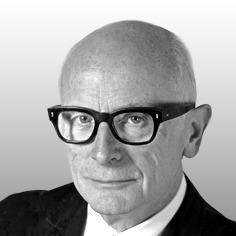What can the USA possibly teach us about safer cycling and how to develop better cities?

There’s been a huge amount of publicity recently about safer cycling in cities - particularly in London - so much noise, so much argument, so many different viewpoints that I sometimes need to remind myself why it is so important to get this right. Of course it is about reducing casualties on the roads, but the endgame is better quality cities, more humane cities and cities with greater social interaction.
Over the past century we have allowed the heavy metal of vehicular traffic to all but destroy the centres of our cities. Things are are starting to change and the pace is increasing. The cycling revolution is a part of that change.
In 2013 I cycled across with a dozen others interested in the way cities work - architects, planners, journalists - and we studied what places like Portland, Minneapolis, Chicago and Philadelphia were doing to improve conditions for cycling. We ended our US leg in New York, the spiritual home of Jane Jacobs, whose book The Death and Life of Great American Cities and her fight against the freeway building of Robert Moses started the shift away from the total domination by the automobile.
More recently, New York has been doing much to improve conditions for cycling and at the same time delivered new public open spaces in the heart of that crowded city. The charismatic commissioner for transport Janette Sadik Khan, who pushed through many of these reforms, was advised by the Danish architect Jan Gehl, another key figure whose ideas about the way we use space between buildings have revolutionised cities around the world.
It is changing behaviour that will provide the safest environment for both cycling and walking
Before we left for our ride across America we asked Gehl Architects what we should be looking for in the cities we looked at. Their advice was to asses them with regard to the four ‘C’s - Consistency, Connectivity, Comfort and Culture.
While we spent plenty of time looking at the detail of the design of infrastructure and how well it all worked, we arrived in London after riding 4,300 miles with the view that of the four ‘Cs’, culture was the key.
We have now published the of the group which included some specific recommendations to Boris Johnson and his cycling commissioner Andrew Gilligan about what should be done in London. We support the programme of separated cycle lanes, but these can only cover a fraction of London’s road network. It is changing behaviour that will provide the safest environment for both cycling and walking. We must actively change the culture of driving and its relation to cycling with better public information - something we found the Americans much better at doing.
There are areas of central London which are ideally suited to use as shared spaces. The example of Exhibition Road was regularly mentioned by observers in the US; Villiers Street at Embankment has become a shared space through the volume of pedestrians and Monmouth Street in Covent Garden provides a civilised urban space where pedestrians, cyclists and motor vehicles coexist. We suggest the mayor and boroughs should actively seek more areas where shared space can be implemented. Soho, Fitzrovia, the City of London and many of London’s towns could benefit from shared spaces.
To reinforce the idea of a change in the culture of road use, in memory of Francis Golding the planning consultant who was killed in November, the group proposes the which promotes the idea of consideration by all road users and right of way of the more vulnerable.
Most importantly, we believe that all transport and urban planning should be fully integrated so that the street and the place, the activities and the architecture are considered holistically and that active transportation - walking, cycling and public transport - should be seen as the structure for movement in our city centres.
Peter Murray is chairman of NLA - London’s Centre for the Built Environment



























No comments yet